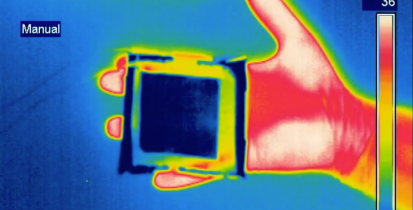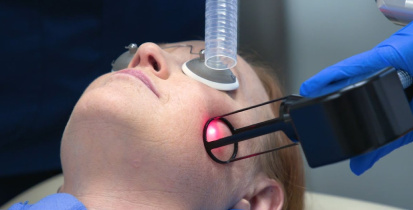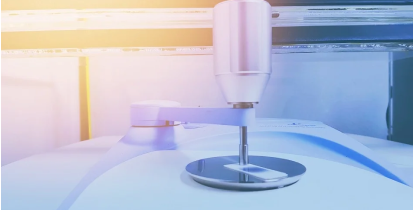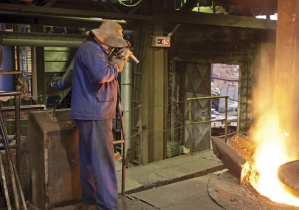
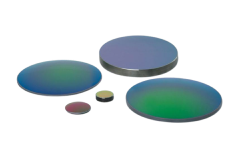
Stock Available
Bespoke Ordering Available
Contact us now
Find out more about our custom germanium optics
Call +44 (0)1622 859444 Call +1 401 583 7846
Knight Optical is at the forefront of providing top-tier germanium optics and infrared components tailored to your unique specifications. Our range encompasses germanium IR lenses and other optical elements such as germanium windows, germanium aspheric lenses, and germanium prisms.
We are able to provide our customers with large germanium optics with dimensions exceeding 230mm, ideal for aerospace applications.
Coatings are often critical to germanium’s performance and at Knight Optical we ensure we can provide a variety of coating types to suit your application, mainly antireflective (AR) and diamond-like carbon (DLC) coatings. Our AR/AR coatings, often essential for components being used within an optical system, exhibit high transmission wavebands above 87%, and our AR/DLC coating type is ideal for germanium optics being used in a rugged environment, where the DLC-coated surface can be exposed to harsh conditions including abrasives. Our stock germanium can be purchased with coatings extending over the MWIR and LWIR coating ranges including 3-8µm, 3-12µm, and 7-14µm.
Our typical manufacturing specifications are listed below, however, we are always expanding our capabilities so please do not hesitate to contact our technical sales team who will guide you through your enquiry.
Our Germanium Optics Include Germanium Infrared Lenses
Alongside our other germanium products, we specialise in providing custom germanium IR lenses, both stock and bespoke.

Speak to our experts about your Custom Germanium Optics needs today
Call +44 (0)1622 859444 Call +1 401 583 7846Make a quick enquiry about Custom Germanium Optics Now
Dive into the forefront of optical solutions. Got questions about an optical product? Reach out now and let our expertise guide you.
Optical Properties of Germanium
Germanium (Ge) is a crystalline material with the highest index of refraction (4.0026 at 11µm) among frequently used infrared materials. Germanium’s high refractive index means that uncoated germanium can act as a natural 50% beamsplitter between 2 and 14µm. It also has a comparatively high hardness and density, making it an ideal substrate in optical systems requiring a more robust infrared optical component.
With our in-house state-of-the-art metrology laboratory, you can be confident that your germanium optical components, whether it’s a germanium window or a germanium IR lens, will meet your requirements. You can find out more about our testing facilities here.
| Transmission Range | 1.8 to 23µm |
|---|---|
| Refractive Index | 4.002 @ 11µm |
| Density | 5.33 g/cm3 |
| Melting Point | 936°C |
| Hardness | Knoop 780 |
| Operating Temperature | < 100°C |
| Diameter | 5mm to 300mm + |
|---|---|
| Form error (@633nm) | < 0.5 waves |
| Centration/parallelism | < 1 arc minute |
| Scratch/dig | < 60/40 |
| Typical coatings | AR/AR — T(avg) > 85% @ 3-12µm, AR/DLC — T(avg) > 85% @ 7-14µm |
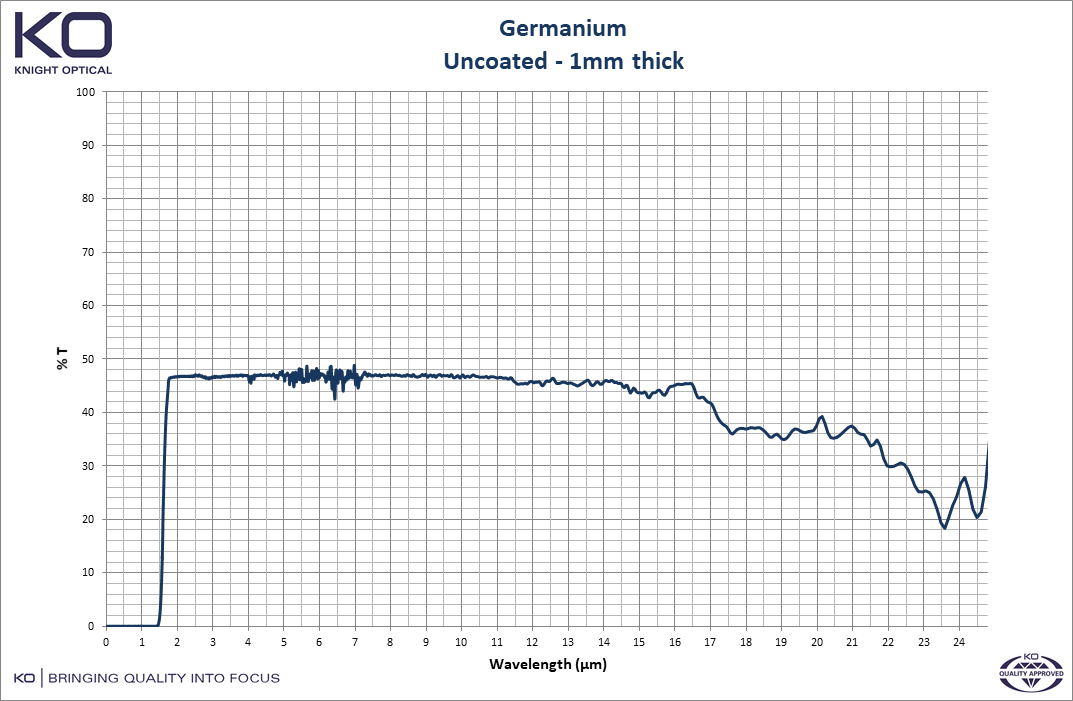
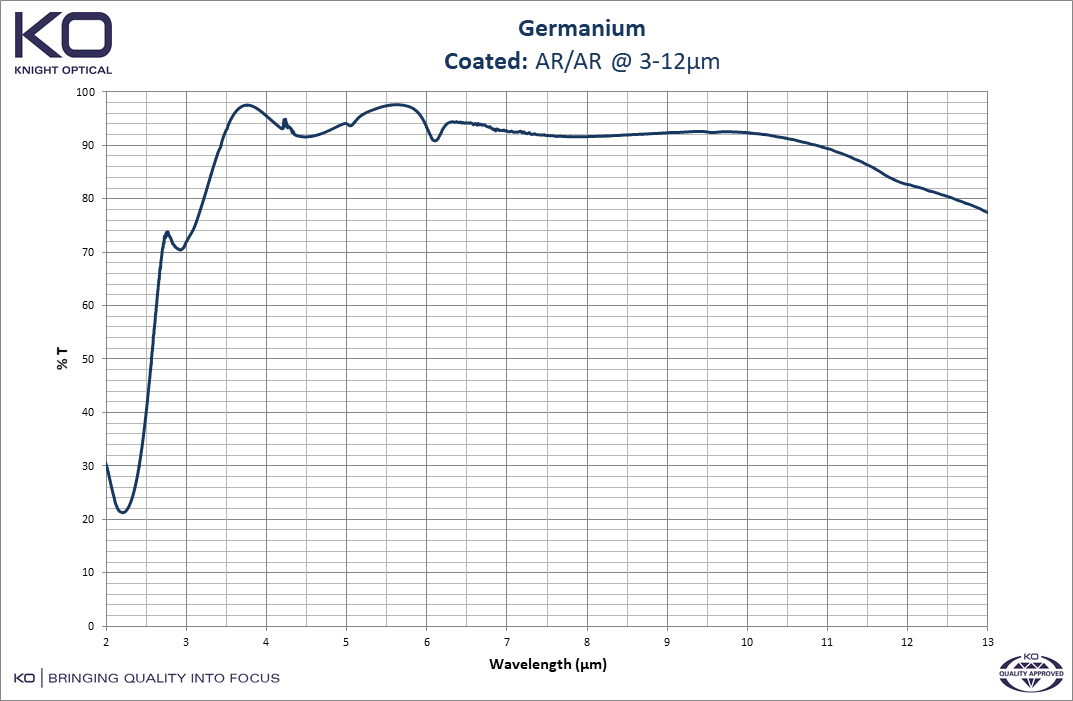
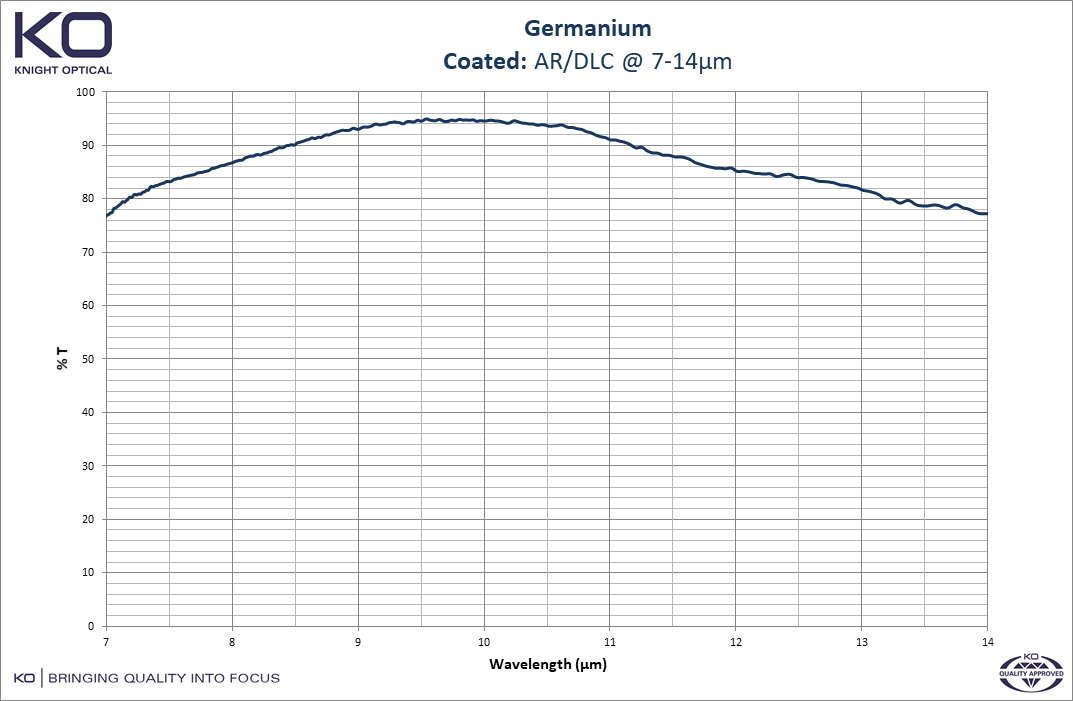
Frequently Asked Questions
-
What are Germanium Optics and Where are They Used?
-
Germanium Optics are those manufactured from germanium (Ge), a high refractive index crystalline material, which is transparent in the infrared waveband, particularly the mid-wave infrared (MWIR) and long-wave infrared (LWIR) regions making it an ideal material for lenses and windows used in thermal imaging and infrared spectroscopy.
-
How Do Germanium and Silicon Compare in Optical Applications?
-
Germanium and Silicon are both semiconductor crystalline materials that exhibit distinct optical properties. Whereas Germanium Optics are more commonly used in MWIR and LWIR thermal imaging applications, Silicon Optics are more often used in applications utilising NIR wavelengths. The two materials are comparable in their transmission and refractive indices, Silicon is half as dense and therefore can be used in optical applications which are weight-sensitive.
-
What are the Properties of a Germanium Glass Lens?
-
Germanium lenses perform over a broad wavelength range in the infrared region from 1.8µm to 23µm, making them suitable for thermal imaging applications. They also have a high refractive index for effective focusing of light and as such exhibit a low dispersion which reduces the chromatic aberrations, which is crucial in an imaging system as it means better image quality.
-
Why Choose a Germanium IR Lens for Your System?
-
For an optical system working within the infrared region, germanium infrared lenses are an excellent choice due to their broad wavelength range encompassing both the mid-wave infrared (MWIR) and long-wave infrared (LWIR) thermal wavebands. Germanium’s high refractive index, compared to many other optical materials, allows for more efficient focusing of light and means the lens exhibits a low optical dispersion which minimises chromatic aberrations. The transmission performance and durability of germanium lenses can also be optimised by applying antireflective (AR) and diamond-like carbon (DLC) coatings.
-
What is the Index of Refraction for Germanium?
-
The refractive index for Germanium (Ge) is 4.002 at 11µm.
-
How Does Germanium Resistivity Impact its Optical Properties?
-
The resistivity of germanium can affect the transmission of light in the infrared spectrum. The lower the resistivity the more the material will absorb the light and therefore germanium’s transmission will decrease. Consequently, the higher the resistivity the higher the transmission in the infrared region which is ideal for when germanium lenses and germanium windows are being used in optical applications.
Is your question not here?
We are ready and waiting to answer any queries you may have about germanium.
Additional Information
Low optical distortion
Due to germanium’s high refractive index, spherical germanium lenses have a low optical dispersion and therefore display minimal chromatic aberration.
Eliminate spherical aberration
Aspheric germanium lenses offer diffraction-limited performance. Their design eliminates spherical aberration and can therefore greatly simplify an optical system by removing the need for multiple elements.
Substrate for infrared longpass
Germanium optics are often used as a substrate for infrared longpass filters as it naturally blocks the UV and visible wavelengths. It is a semiconducting material and therefore has an abrupt cut-on (intrinsic edge) at 1.7µm.
Naturally high reflectivity
Due to germanium’s naturally high reflectivity, AR coatings are usually applied to increase transmission, reaching over 85%. A DLC coating can be applied to an exposed surface, increasing durability and transmission.
Considerations
High density
Germanium has a high density which needs to be taken into account if the optical system is weight-sensitive. Silicon has almost half the density of germanium so could present a better option if weight is an issue.
Thermal runaway
It is also subject to thermal runaway – as the temperature increases, germanium’s absorption also increases, meaning its transmission is reduced. At 100°C, it is almost opaque, and by 200°C, it does not transmit at all. Therefore it should be used in systems working below 100°C to reduce the risk of optical failure
Hazardous dust (if inhaled)
Germanium dust is hazardous if inhaled, so care should be taken when handling.

Get in touch with us:
With our in-house state-of-the-art metrology laboratory you can be confident that your optical components will meet your requirements. You can find out more about our testing facilities here.

Operating for over 30 years
Knight Optical has been operating for over 30 years, with our managing director Colin Overton at the helm. Over this time, we have become a global leader in the production and distribution of scientific optical components and bringing quality into focus for all of our products and services that we provide.
Our 2022/2023 Catalogue
Inside Knight Optical’s catalogue you’ll find details of the industries we serve as well as the many other services we can offer. It also showcases hundreds of our most popular products, supported by useful technical information, to help you choose the right part for your application.
Click below to view our digital catalogue now.
